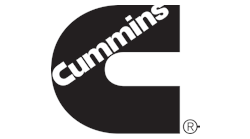Gregg Harrington
Vice president of maintenance
National Express Transit Services
This is likely the most exciting time to be a fleet technician assigned to a fleet of transit vehicles.
Tools available today include analyzers capable of running hands-off algorithms that test the status of electrical systems, engine control computers, transmission control modules, smart HVAC parameters and “Intelligent Bus” type devices displaying results directly to maintenance technicians along with specific repair recommendations. Operating parameters for engines, transmissions, and HVAC systems can be monitored on many transit vehicles by the technician in the shop while the vehicle is in route service. Some manufactures are developing buses that can email or text a message to a technician with real-time information when monitored systems fall out of set parameters.
Never before have buses been built with such integration allowing major control systems on the bus to communicate with each other with results available to a wide variety of smart devices. Operating parameters for engines, transmissions, and HVAC systems can be monitored on many transit vehicles by the technician in the shop while the vehicle is in route service.
Even with all the tools and technology available for diagnosing mechanical problems, the best use of technology is to enhance the training, skill and experience of National Express’ highly skilled technicians.
At National Express we are embracing training and education technologies to get the information our technicians need into their brains. Use of computer technology has recently allowed our technicians to link to on-demand training and certification programs for critical bus systems without the technician ever leaving our facility. Dealer level training programs are available online that helps develop the confidence National Express technicians need to maintain today’s transit vehicles. Certification tests completed online allow our technicians to demonstrate their professional competence.
The National Express commitment to technology allows an expert technician in one location to share that expertise through a WebEx seminar with the team at many locations. The use of tablet-type communication devices equipped with cameras allows technicians to go “under the bus” and share real-time pictures and conversations with both internal and external recourses for complex diagnostics. Drivability issues can be recorded during operations and shared with factory engineers. This commitment to technology greatly enhances the technicians’ skill and experience. That skill and experience translates directly to increased efficiencies and enhances cost containment.
In the near future National Express plans to link our technicians through mobile devices to manufacturer repair manuals, preventive maintenance procedures and checklists allowing our technicians to drill down for additional service practices and directly upload data to our maintenance information software.
Darrell Johnson
CEO
Orange County Transportation Authority
An automated diagnostic system installed on all buses within the Orange County Transportation Authority’s fleet has cut costs and improved the efficiency of maintenance operations by reducing the need for manual inspections.
With a fleet of more than 800 buses, traveling 19 million miles a year and serving more than 50 million customers annually, it is imperative that OCTA vehicles are running safely and efficiently.
To ensure the fleet is performing at an optimal level, each vehicle receives a nine point inspection every 30 to 45 days. This includes a thorough review of the engine, transmission, vehicle safety components and coolant system.
Completing the inspection required 60,000 man-hours in 2001. Today, approximately 80 percent of the diagnostics is completed by a computer system, known as the Health Monitoring System.
Inspection of brakes, the under carriage of the bus and shock absorbers are among items that continue to be checked manually. However, the new Health Monitoring System saves an estimated 20,000 hours of labor each year, equating to $1.1 million in savings.
In addition to the daily inspection, the system tracks how the bus operated while on the road. This allows technicians to asses any variations that occurred during service as well as the vehicle’s average miles per gallon. The added feature alerts maintenance employees to possible issues that could pose a larger problem and added expense down the line.
OCTA began migrating to the Health Monitoring System when the fleet of 40-foot buses was replaced with clean burning fuel. Today, all 40-foot buses are powered by CNG or LNG. And with fuel costs approximately 60 percent less than diesel, the transition to alternative fuel saves the agency millions of dollars each year.
Making the best use of the limited dollars available for our transit system through more efficient maintenance operations has allowed OCTA to reinvest the savings and provide more revenue service hours for customers.
Lou Wenzler
Technical sales support director
Cummins Inc.
Advancements in technology have and will continue to be a key driver for Cummins as well as the transit industry as a whole. As the leading provider of engine and aftertreatment systems for the transit bus industry, we are always striving to offer transit bus authorities the right products to fit their operational needs coupled with the right technical support and training to help improve their overall maintenance operations.
We feel that the first step to achieving a highly efficient and cost effective business for transit authorities begins with selecting the right product for their specific needs. Cummins offers transit customers the option to choose from clean diesel engines, natural gas engines as well as diesel-electric hybrid drive systems. All of these products and their integrated subsystem components are designed and developed in-house to deliver efficiency and performance that aid in reducing overall operational costs for transit authorities. Building on a proven base engine, continuous improvements to the subsystem components including fuel systems, turbochargers, electronic controls, filtration and exhaust aftertreatment, allow us to deliver a more efficient product for transit bus customers year after year.
In addition to providing the right products, Cummins is committed to delivering the right product support and training for the maintenance professionals throughout the transit industry. Cummins products are backed by North America’s largest and most capable parts and service network and with tools and training for maintenance operators to be certified to work on Cummins engines. At Cummins, we have developed a series of interactive computer-based training modules called Cummins Virtual College. This self-study learning program is available online or on CD-ROM and is designed to effectively train service technicians on all Cummins products. This format of training is aimed at minimizing the technicians time away from the shop which in turn will help reduce overall training costs for a maintenance operation. The Cummins Virtual College is just one tool within our online subscription based information portal called QuickServe Online. Here maintenance technicians can access a multitude of service information such as troubleshooting guides, operation and maintenance manuals, and service bulletins specific to any Cummins engine. These tools are some of the ways in which we strive to help maintenance departments operate more efficiently and effectively.
As technology continues to advance in the industry, Cummins will continue to deliver better products, more effective tools and educational training to resulting in improved overall operations of transit bus customers.
Bill Brunet
Director of sales and business development, services
Bombardier Transportation North America
Today’s passenger rail vehicles are extremely complex and require advanced tools and techniques in order to maintain them properly, efficiently and cost-effectively. It is vitally important that the right information is available to the right personnel at the right time in order to ensure that maintenance and repair activities are performed correctly, safely, on-time and within budget. Of all the tools available, one stands out as the clear game-changer for maintenance operations — handhelds.
In today’s world, it’s difficult for many to imagine living without one of these intelligent, web-enabled, wireless hand-held devices. Never before has so much information been available to so many, and literally at their fingertips. And this amazing power can be leveraged to bring incredible efficiencies to the task of passenger rail vehicle maintenance. Handhelds may have started out primarily as consumer items, good mostly for browsing the web, chatting with friends or playing games. But with the proper set of applications and effective information system integration, these devices can now be put to use as powerful productivity tools in the hands of rail vehicle maintenance technicians.
At Bombardier we are doing precisely that. Following the success of our Sentio kiosks, whose primary purpose was to provide on-demand access to troubleshooting knowledge to maintenance technicians on the shop floor, the introduction of handhelds takes this approach many steps beyond. Handhelds provide a totally integrated solution for the shop floor, directly in the palm of the technician’s hand. Literally at their fingertips, our maintenance technicians will now have the ability to access volumes of information that are essential for the completion of their tasks.
For instance, technicians can access electronic fault finding guides and standardized work instructions directly on their handheld without having to leave their work location, saving valuable time. In addition, they can also have direct access to maintenance instructions, alerts and even schematics and drawings. Finally, some of the other benefits of deploying this technology in rail maintenance are reduction of paperwork and the time this takes to prepare, improvement in the accuracy of data capture, real-time reporting and direct access to parts inventory information. The possibilities are nearly endless and one thing’s for certain — the use of handhelds in rail vehicle maintenance operations is here to stay!
Using handhelds in rail vehicle maintenance activities — a day in the life
Imagine this scenario if you will: our technician (let’s call him John) has just begun his shift. He logs in to his handheld, which clocks him into the payroll system while simultaneously alerting the operations center that he is available to begin his assigned tasks. Once he’s logged in, John receives a message which directs him to his first work order for the day — he clicks on the task name and is invited to review the training material, should he need to, in order to be sure he understands the steps to be performed. There, along with the step by step procedure, he finds an interactive video which demonstrates the removal and replacement of the part he’ll be working on while highlighting important safety information. Satisfied that he understands the task, he clicks the link to the drawing and confirms that the revision level of the part called out in the work order matches the latest drawing level. Next he reviews the Bill of Material and sees that all the materials he requires to complete the task have already been pulled from stores and are staged trackside for his use. He clicks on the work order to signify that he has begun the task. Once he has removed the part being replaced, he uses his handheld to scan the barcode of the replacement part. The part is consumed from the inventory system and the vehicle’s configuration record is updated with this barcode information simultaneously. Upon completion of the job, John clicks on the work order and the system is updated to show that the work is completed. John’s time is collected against the work order and the operations center is notified that the work order has been closed. John’s next work order is just a click away.






